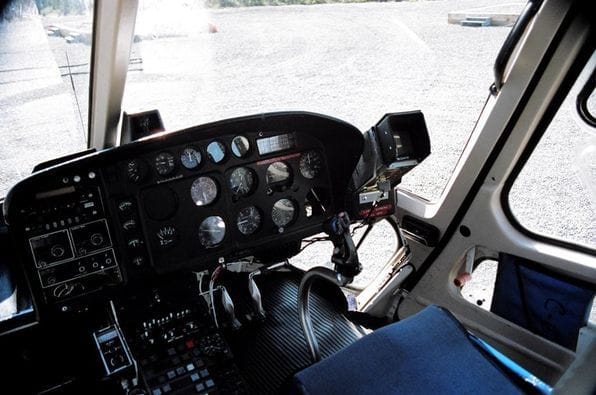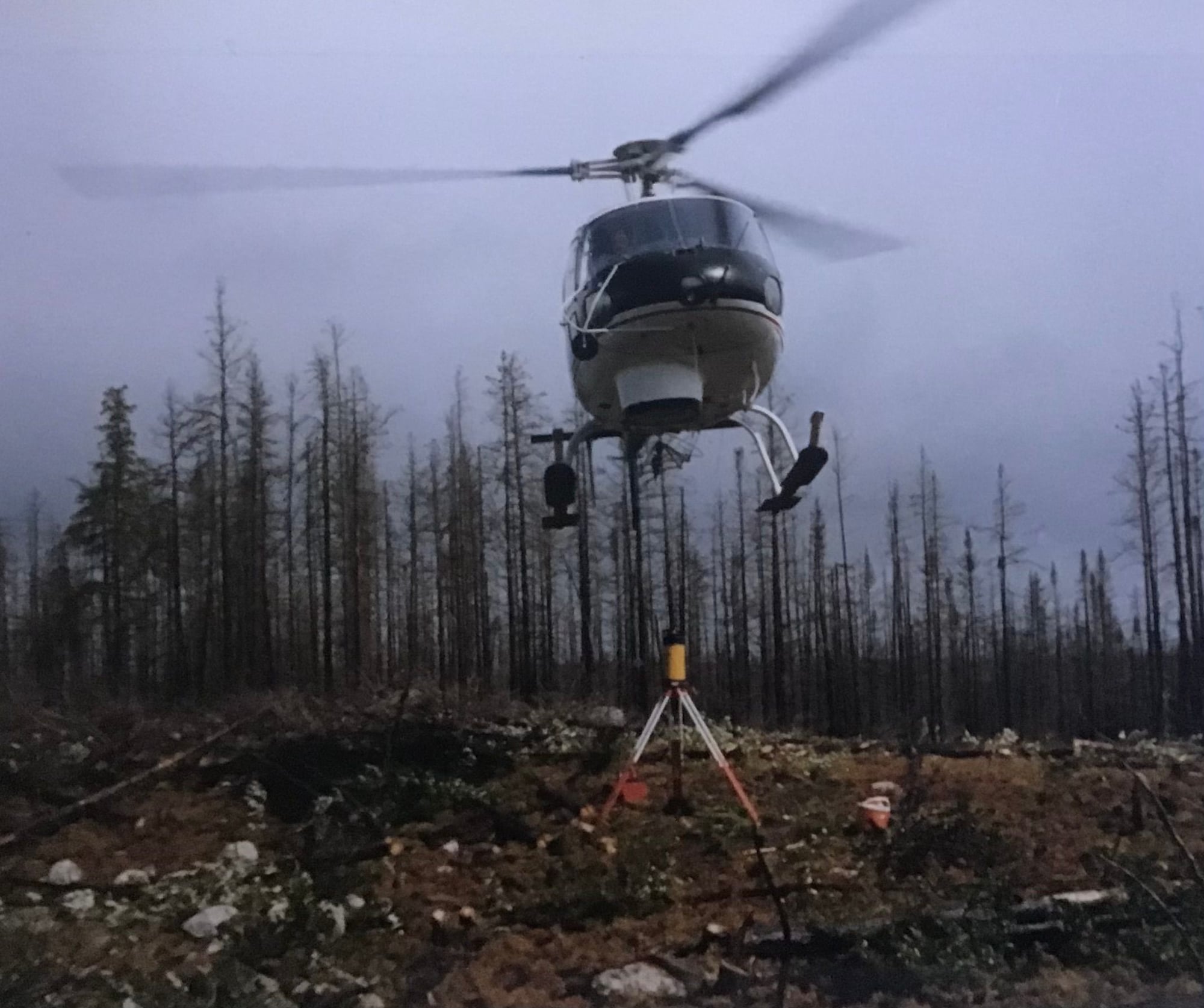I will probably get a lot of flak for this but this is a combination of 2 posts on the old discussion.
I am posting a couple of photos just to relieve the monotony.
I was doing a job which entailed a lot of climbing, descending and hovering at high altitudes AGL.
I discovered that it is possible to enter VRS from a steady hover.
It was a great surprise the first time.
Due to the job it happened a lot. So I got the chance to try various things out.
Maintaining a vertical descent pulling power just increased the rate of descent.
Controls got sloppy but the aircraft did not enter any unusual attitudes.
There were no torque or RPM fluctuations.
Recovery was simple, Initiate forward or sideways movement and exit the column of descending air.
The aircraft was very light during these operations just myself and sometimes 1 passenger and around half fuel.
It warned you it was going to enter VRS. You would be happily sitting there at about 80%Q. The VSI would flicker (not even to 100FPM down) Altimeter would hardly move. If you did nothing it would enter VRS shortly thereafter. Pull a bit of collective and it usually entered VRS immediately and fully.
It only happened in calm wind conditions.
As we were hovering, climbing or descending on a ‘Laser’ beam you were never moving more than 2 feet in the horizontal from ground level to as much as 7000 AGL. Usually we only climbed 2000-4000 ft.
If you lost the ‘Laser’ beam you had to descend to ground level in order to reacquire it so sometimes I remained in VRS to descend.
The aircraft was being observed using a 50x theodolite so the surveyors could see the aircraft depart downwards. They would have me in the crosshairs as I hovered and suddenly I would depart downwards. They thought it was very funny to watch.
Just for info the aircraft had a cowling just abut under the fwd seats. The cowling had a screen on the bottom. Inside the cowilng was a video camera focused on the screen and a small 3 inch square monitor was installed on the instrument panel. A 10 amp gyro stabilized ‘Laser’ was placed on the ground pointed vertically upwards. You hovered low over the ‘Laser’ and placed the aircraft over it until you saw the ‘laser’ dot on the screen. You then initiated a climb at about 6-800 FPM keeping the dot as close to the center of the screen as possible. If you rapid control movements failed in this and you lost the dot you had to return to ground level and start over again. It took a lot of practice to learn the technique usually about 5 -10 hours. Some guys caught on quickly, some never could. The customer paid fro the training. They also allowed you to go out and practice if you didn’t do a shot for a day or two as it was a skill that required constant practice. Totally an eye, hands, feet coordination thing…if you had to think about it the dot was gone.
Starting from 100 ASL to 8000 ASL Temps -20 to +25C. Terrain100 ASL to 1500-2000.
Well some folks are going to say that entering VRS in still air and zero rate of descent is impossible.
In discussion years later with a very experienced and well respected test pilot he was surprised to hear of it but thought that it was just amazing that the circumstance was created. The ‘Laser’ keeping the aircraft in a +- 24 inch hover for extended periods and the aircraft being tracked with a theodolite. The chance to operate in the conditions described and stay in VRS for up to 1-2 minutes try various things and observe results was a unique opportunity. He said that they had never even thought of doing it and it would have been a separate test programme during which it would have been difficult to achieve the test parameters.. I agreed totally with him. It was an interesting thing but not worth the candle to spend time to explore. In the end what would have been the benefit of it a except the “Been There Done That” T-shirt.
You always lost the ‘Laser’ dot when it happened so you had to descend back down to ground level so staying in VRS was quick way to get there. I found exiting at a +-45 degree from aircraft heading with a +- 10 degree nose down attitude to gain fwd speed seemed to work best. You could exit by entering autorotation but this involved a considerable height loss. Exiting fully developed VRS with power applied and fwd speed was the most easy but when you are looking at VS anywhere from -1500 to -2500 it is going to take TIME and ALTITUDE to return to straight and level flight. As I stated before aside from the sloppy controls the aircraft never entered any unusual attitude or did anything scary. It seemed happy in the state it was in, no RPM, Torque or heading changes.
 DLY a nice 350D. The Helicopter was brought to the hover over the laser with the beam hitting the screen on the cowling.
DLY a nice 350D. The Helicopter was brought to the hover over the laser with the beam hitting the screen on the cowling.
 The dot is displayed on the small TV screen on the right,
The dot is displayed on the small TV screen on the right,
 The 10 amp gyro stabilized laser in position. Now just keep the dot in the screen and climb vertically 4-5 thousand feet and come to a stable hover for the surveyors to take the shot. .
The 10 amp gyro stabilized laser in position. Now just keep the dot in the screen and climb vertically 4-5 thousand feet and come to a stable hover for the surveyors to take the shot. .